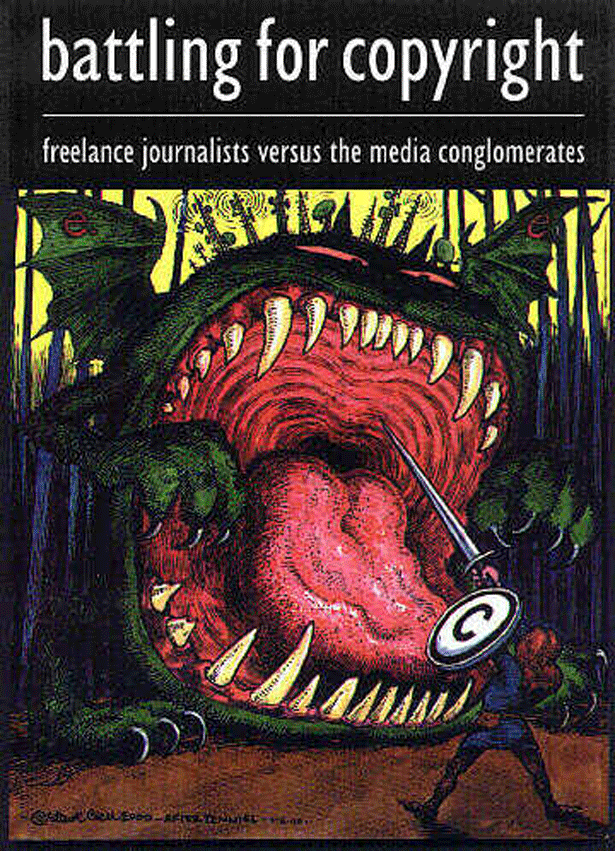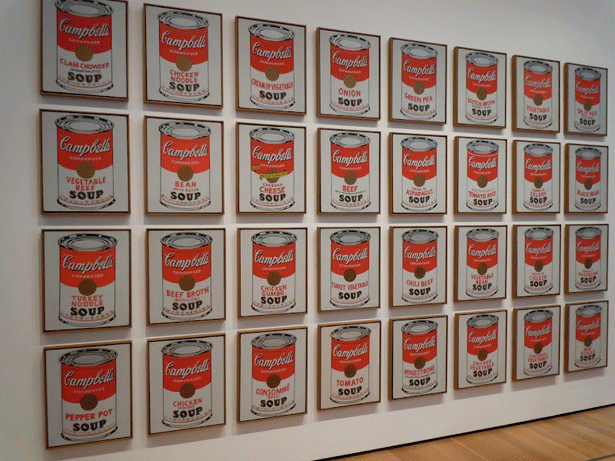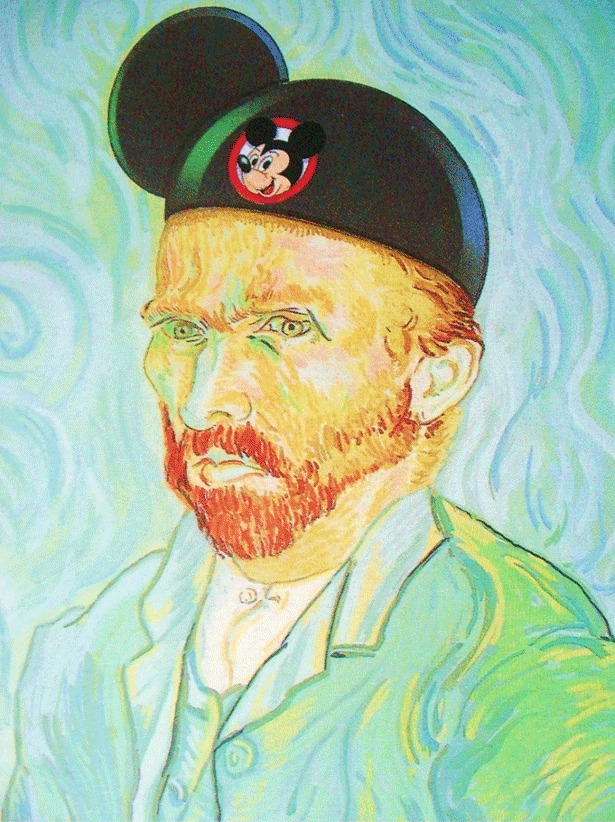Moral dilemma: My company steals from other creatives
 A friend of mine wrote me the other day and told me his company was stealing copyrighted work. He was very upset and said that his manager believes that anything on the internet is available to be put on a crappy T-shirt.
He asked my advice on what to do. He was a creative who felt righteous indignation about stealing from other creatives. I had to think about what to say in response.
The first time I was ordered to steal copyrighted material by my boss, I was horrified and felt I should protect the rights of others. It wasn’t so much for monetary gain but for a presentation and involved the work of several dozen illustrators. Nonetheless, it was something for which they should have received payment.
I pushed the point in a meeting on the project, pontificating on the copyright law in front of several executives and the president of the company. Later on, my supervisor informed me that the multi-sleazebag legal department had approved of the plan, claiming that if the copyright owners found out, it “wouldn’t cost more than a hundred dollars or so.”
Once again, I pointed out that the actual figure would be much more and the embarrassment to the corporation would be devastating. I was told not to worry about it and use the material. I did but made a copy of the presentation for my records, just in case. In a worst-case scenario, I didn’t want to be the art director who stole from other creatives. I knew of at least one other art director who took the fall for the company when the same thing happened. The project was discovered and the art director was fired, while every other art director and designer in the company sat mum, afraid to speak up and say that she had been handed the material and told to use it.
“Just do it and forget about it…it’s not your neck on the line. When your company is sued for thousands of dollars, you’ll be long gone,” I wrote to my friend. I hit send and felt I had given him the best advice available. Later I realized that he would take the blame when the company got caught. I regretted not telling him to nail the company doors shut with everyone inside and burn the place to the ground or poison the employee coffee pot because the penalty would be less than the damage to his professional reputation when he became the scapegoat for his company and their blatant disregard for the law.
A friend of mine wrote me the other day and told me his company was stealing copyrighted work. He was very upset and said that his manager believes that anything on the internet is available to be put on a crappy T-shirt.
He asked my advice on what to do. He was a creative who felt righteous indignation about stealing from other creatives. I had to think about what to say in response.
The first time I was ordered to steal copyrighted material by my boss, I was horrified and felt I should protect the rights of others. It wasn’t so much for monetary gain but for a presentation and involved the work of several dozen illustrators. Nonetheless, it was something for which they should have received payment.
I pushed the point in a meeting on the project, pontificating on the copyright law in front of several executives and the president of the company. Later on, my supervisor informed me that the multi-sleazebag legal department had approved of the plan, claiming that if the copyright owners found out, it “wouldn’t cost more than a hundred dollars or so.”
Once again, I pointed out that the actual figure would be much more and the embarrassment to the corporation would be devastating. I was told not to worry about it and use the material. I did but made a copy of the presentation for my records, just in case. In a worst-case scenario, I didn’t want to be the art director who stole from other creatives. I knew of at least one other art director who took the fall for the company when the same thing happened. The project was discovered and the art director was fired, while every other art director and designer in the company sat mum, afraid to speak up and say that she had been handed the material and told to use it.
“Just do it and forget about it…it’s not your neck on the line. When your company is sued for thousands of dollars, you’ll be long gone,” I wrote to my friend. I hit send and felt I had given him the best advice available. Later I realized that he would take the blame when the company got caught. I regretted not telling him to nail the company doors shut with everyone inside and burn the place to the ground or poison the employee coffee pot because the penalty would be less than the damage to his professional reputation when he became the scapegoat for his company and their blatant disregard for the law.
The law!
Yes, it’s the law. Using copyrighted material without permission for any commercial usage, which includes presentations, T-shirts, promotional material, in-house posters, etc. is a breach of the copyright law. It does, however, happen every day in every part of the world. If Hello Kitty were a real person, she would die and spin in her grave from all of the illegal usage of her cute and profitable visage. Me-ouch! YIKES! Obviously this is not a valid licensed product but what lawyer wants to bring the gun shop owner who manufactured this into court? Hello Kitty™ Sanrio
YIKES! Obviously this is not a valid licensed product but what lawyer wants to bring the gun shop owner who manufactured this into court? Hello Kitty™ Sanrio
Every creative should know the copyright law, no matter in what country you reside (it’s a global economy!) not only to adhere to it for legal purposes but to protect your own rights as a creative of copyrighted works. There are many books and articles on the subject and I would suggest any source by legal guru Tad Crawford, who works with several arts organizations on artists' rights. Knowing the law and being able to intelligently put forth the problems a company could face by unfair usage could save a corporate entity or small business a crippling legal suit and devastating bad publicity—that is, if they listen to you! As a freelancer, the copyright law not only protects your works but also your right to being paid by a client. The transfer of copyright can only be recognized by written consent to transfer such rights. When a client refuses to pay your invoice (which should be backed up with a contract laying out the transfer of copyright or other usage, contingent on payment), you can withdraw the copyright. After that, it’s no longer just a court case on non-payment but one of copyright violation with much stiffer financial penalties. Clients tend to change their minds on payment when it takes a turn for the very worst.
 A very apt image for the copyright issue! ©2001 Steve Bell
A very apt image for the copyright issue! ©2001 Steve Bell
I advise young designers who insist on doing free work for companies for “exposure” and the promise of future work (because they know more than I do and just won’t listen to my warnings about doing free work—ah, the passion and verve of youth!) to keep ownership of the copyright and just assign the usage to the company of creepy scammers, er…I mean the client, for a short period of a year so there IS a future in the free work. If the client reneges, don’t renew the assignment of the copyright! I’ve been thanked for that advice and heard more apologies from those who did the free work without a contract and never saw any of the client’s promises come to fruition.
Fair usage
According to an entry on Wikipedia:The fair use defense to copyright infringement was codified for the first time in section 107 of the 1976 Act. Fair use was not a novel proposition in 1976, however, as federal courts had been using a common law form of the doctrine since the 1840s (an English version of fair use appeared much earlier). The Act codified this common law doctrine with little modification. Under section 107, the fair use of a copyrighted work is not copyright infringement, even if such use technically violates section 106. While fair use explicitly applies to use of copyrighted work for criticism, news reporting, teaching, scholarship, or research purposes, the defense is not limited to these areas. The Act gives four factors to be considered to determine whether a particular use is a fair use: The purpose and character of the use (commercial or educational, transformative or reproductive);As any writer on this and other blogs know, or should know, is that under fair use, we can show copyrighted work as mentioned above. As a designer, does the use I outlined in the first part of this article fall under fair use (presentations within a company or to a client)? It does not.The Act was later amended to extend the fair use defense to unpublished works.
- the nature of the copyrighted work (fictional or factual, the degree of creativity);
- the amount and substantiality of the portion of the original work used; and
- the effect of the use upon the market (or potential market) for the original work.
What is a “derivative work?”
Vanilla Ice suffered the question of derivative work with his well-loved Ice, Ice Baby hit. Was it lifted, or “sampled” from David Bowie’s Under Pressure? Mr. Ice argued the beat was completely different and monkeys could fly out of his rear end. Wikipedia defines the subject as such:A “derivative work” is a work based upon one or more pre-existing works, such as a translation, musical arrangement, dramatization, fictionalization, motion picture version, sound recording, art reproduction, abridgment, condensation, or any other form in which a work may be recast, transformed, or adapted. A work consisting of editorial revisions, annotations, elaborations, or other modifications which, as a whole, represent an original work of authorship, is a “derivative work."
The Wikipedia entry uses a piece by Marcel Duchamp of the Mona Lisa with a moustache and claims it is “often used by law professors to illustrate the legal concept of derivative work. Obviously da Vinci isn’t available to launch a suit for the use of his work but other works have been used in such a manner. ©Andy Warhol
©Andy Warhol
Warhol’s Campbell’s soup can, for instance, bore a trademarked logo, but the Campbell's Soup Company chose not to sue. Perhaps the free advertising involved persuaded them to not cause problems in the public eye. In this case it is worth noting that a critical piece of any lawsuit is proving damages. As with the problem my friend faces at work, using copyrighted works and logos, there is a commercial profit made from the images and that is another consideration in bringing suit. Collage artists, such as Richard Hamilton (know as the “father of pop art”), used other people’s images in his work, getting by with fair use.
 ©Richard Hamilton
©Richard Hamilton
 Artist unknown...and probably for good reason. Is this derivative? Van Gogh can't sue but can Disney claim damages or is it protected under the "spoofing law?"
Artist unknown...and probably for good reason. Is this derivative? Van Gogh can't sue but can Disney claim damages or is it protected under the "spoofing law?"
 Another example that would send Disney's lawyers scrambling for subpoenas. Fair use of trademarked images? Sometimes it's HOW the images are used in a commercial context and do they damage the original property.
Another example that would send Disney's lawyers scrambling for subpoenas. Fair use of trademarked images? Sometimes it's HOW the images are used in a commercial context and do they damage the original property.
 What is the usage of this image? It's merely for the sake of the lame headline, weak joke and not because of a story on Disney or Toy Story®. This is not fair use. ©Miami New Times, LLC.
What is the usage of this image? It's merely for the sake of the lame headline, weak joke and not because of a story on Disney or Toy Story®. This is not fair use. ©Miami New Times, LLC.
 McDonald's Big Mac sandwich. Two eight-pound all-beef patties, special sauce, lettuce, cheese, onions, pickles on a sesame seed bun. Hardee's just came out with the Big Stack that has special sauce, lettuce, cheese, pickles on a sesame seed bun but no onions and two angus beef quarter pound patties. Obvious stealing but not a copyright issue. Just a health issue! Big Mac is a registered trademark of the McDonald's Corp. The Big Stack is a registered trademark of Hardee's Food Systems, Inc.
McDonald's Big Mac sandwich. Two eight-pound all-beef patties, special sauce, lettuce, cheese, onions, pickles on a sesame seed bun. Hardee's just came out with the Big Stack that has special sauce, lettuce, cheese, pickles on a sesame seed bun but no onions and two angus beef quarter pound patties. Obvious stealing but not a copyright issue. Just a health issue! Big Mac is a registered trademark of the McDonald's Corp. The Big Stack is a registered trademark of Hardee's Food Systems, Inc.
More fresh hell…
What can you do when the usual problem occurs? Your boss or a client says, “Here’s a web site I like. Make our site just like this one!” Is it breaking the copyright law? No, because it’s not using a copyrighted image or work. It’s disgraceful to a creative and we feel cheapened, but it’s not against the law. Some would argue that it has to be different by a certain percentage to be different from the original work. A different logo and elements will cover that question. With logos, however, even slight differences won’t be derivative works. There have been too many examples of suits involving logos that are similar to others that have been trademarked. NBC (The National Broadcasting Company) ran into problems in 1976 when a new logo was too similar to a small public broadcasting station (read more here). NBC has also had some legal wrangling with the Font Bureau over copyrighted typefaces (read more here). Many years ago, a well-known greeting card company was sued by a smaller greeting card company when the larger company came out with a line of cards that were identical to the smaller company’s line. The larger company argued that it was an art style and not subject to the copyright law. The court did not agree and the larger company paid for it. After meeting several long-time employees from the larger firm, I was told the tale that the head creative director had indeed brought in the line of cards from the smaller company and instructed artists to, “do a line of these!” A company for which I worked had a practice of using “inspiration” from existing products by competitors. The staff of designers was extremely disturbed by this practice. Eventually some senior creatives created a presentation of how to create works that used “inspiration” from other products yet sidestepped the copyright issue. It was a brilliant attempt at fraud but still flawed. Eventually the company, due to the brilliant design and creative work from designers in one department, inspired the head of the creative department to see a new direction in insisting designers actually use their own creativity in designing products. Problem solved and major lawsuits dodged.What is the line that cannot be crossed?
Still, the question of what is “inspiration” and what is outright copyright theft is argued by creatives everyday. To some, it’s just common sense. Like Hollywood remaking films, rather then using new scripts that sit in mountainous piles in warehouses like the final scene of Raiders of the Lost Ark, creativity should be allowed to reign when it comes to web sites and products. Fresh and exciting design is not just important to designers but to civilization as well. How many remakes of It’s a Wonderful Life can the world suffer? How many similar web sites can we view without forgetting where we are on the world wide web? Not even creative organizations have had much luck in fighting copyright theft over the past decade, with digital technology running rampant. A dozen years ago, a group of organizations got together to stop the practice of image scanning by ad agencies, which they would use for storyboards, client presentations and such. They called the campaign, "Ask First," hoping creators would at least know who was using their work and frankly, many creatives were upset at the failed campaign, insisting it should be, "Don't Do It At All!" The copyright law is quite specific and "Ask First" was akin to "Please Murder Nicely." An art director I knew was given a project to accomplish using copyrighted material in much the same manner. She was very talented but wanted to climb the corporate ladder by being a “company person.” When the trouble hit, she was hung out to dry and fired. She now had to find a new job with the stigma of being fired. She never spoke about any considerations worked out with the company, if there were any. I never heard anything further about her except that she was “freelancing.” She has since disappeared off the social media scene, so I don’t know what the end of the story. Perhaps the end of the story is that her life was ruined. Perhaps she had to find a new career. How would she answer the reason she was let go from her previous employer? What advice do I have? There is no honor in stealing and no escaping theft forever. There is also no justice for the victims, so don’t become one! Do you have a story about a moral dilemma with your employer or a freelance client? Please share it...but no names, because we don't want any lawsuits!Speider Schneider
Speider Schneider is a former member of The Usual Gang of Idiots at MAD Magazine and has designed products for Disney/Pixar, Warner Bros., Harley-Davidson, ESPN, Mattel, DC and Marvel Comics, Cartoon Network and Nickelodeon among other notable companies. Speider is a former member of the board for the Graphic Artists Guild, co-chair of the GAG Professional Practices Committee and a former board member of the Society of Illustrators. Follow him on Twitter @speider or add him on Google+
Read Next
3 Essential Design Trends, November 2024
Touchable texture, distinct grids, and two-column designs are some of the most trending website design elements of…
20 Best New Websites, October 2024
Something we’re seeing more and more of is the ‘customizable’ site. Most often, this means a button to swap between…
Exciting New Tools for Designers, October 2024
We’ve got goodies for designers, developers, SEO-ers, content managers, and those of you who wear multiple hats. And,…
15 Best New Fonts, September 2024
Welcome to our roundup of the best new fonts we’ve found on the web in the previous four weeks. In this month’s edition…
By Simon Sterne
3 Essential Design Trends, October 2024
This article is brought to you by Constantino, a renowned company offering premium and affordable website design
You…
A Beginner’s Guide to Using BlueSky for Business Success
In today’s fast-paced digital world, businesses are always on the lookout for new ways to connect with their audience.…
By Louise North
The Importance of Title Tags: Tips and Tricks to Optimize for SEO
When it comes to on-page SEO, there’s one element that plays a pivotal role in both search engine rankings and user…
By Simon Sterne
20 Best New Websites, September 2024
We have a mixed bag for you with both minimalist and maximalist designs, and single pagers alongside much bigger, but…
Exciting New Tools for Designers, September 2024
This time around we are aiming to simplify life, with some light and fast analytics, an all-in-one productivity…
3 Essential Design Trends, September 2024
September's web design trends have a fun, fall feeling ... and we love it. See what's trending in website design this…
Crafting Personalized Experiences with AI
Picture this: You open Netflix, and it’s like the platform just knows what you’re in the mood for. Or maybe you’re…
By Simon Sterne
15 Best New Fonts, August 2024
Welcome to August’s roundup of the best fonts we’ve found over the last few weeks. 2024’s trend for flowing curves and…
By Ben Moss















